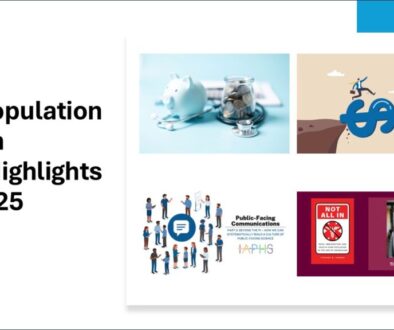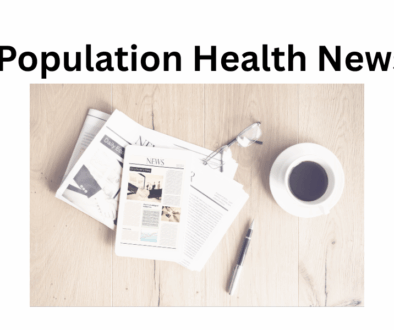NIH Grants Were a Huge Part of My Training.
How Will We Bridge the Gap Now?
Michael D. GreenThe NIH Diversity Supplement program was an efficient and successful one that changed my life. I mourn its loss and urge researchers to think critically about what we do now that it is gone.
NIH Diversity Supplements, also known as “Research Supplements to Promote Diversity in Health-Related Research,” was a program that aimed to introduce new sociodemographic perspectives into a fairly homogeneous scientific research training landscape.
From an analysis by Dr. Jamelle Banks,1 who was at the National Institute of Aging at the time: “Between FY10 and FY21, NIA awarded 416 diversity supplements to existing NIH grants, with 2021 having 85 awardees, the most of any year. Of the 416 awardees, the majority were female (69%), African American (42%) individuals, and Hispanic (40%) individuals, and most were at the pre- (34%) or postdoctoral (37%) career level...”
My Experiences and What I Gained
For my diversity supplement, I was able to create my first NIH grant proposal, interact with a Program Official for the first time, learn about interpreting summary statements, and became a part of the progress report process. While supported by a diversity supplement for two years, I was able to produce my first two co-author papers as a collaborator,2-3 and I was also able to produce two more first-author papers, which are now both at different stages of peer-review.
The first aim of my diversity supplement was to describe sociodemographic and clinical factors associated with discrimination in healthcare. Up to this point, I had only led analysis with cross-sectional data. The product of this first aim is not necessarily a newsworthy finding; I would argue it is reflective of anecdotal evidence. But working with panel data brought me the ability to expand my analytical toolbox to longitudinal methods. I spent many meetings with my mentor figuring out how to handle missing data, perform quality checks on variables, and how to present my findings for a topic that I am passionate about. I recently submitted a revised version of this paper, and it is available as a preprint on Research Square here: https://dx.doi.org/10.21203/rs.3.rs-6507515/v1
The second aim had new challenges. The original aim was intended to examine the impact of discrimination in healthcare on blood pressure over time. We ended up having null results, but the methods and approach we employed we thought could be shifted. Instead of giving up on the project, we thought about reasons that our initial assumptions might not have held. There is evidence of discrimination in healthcare leading to patient disengagement, so perhaps we have less reliable information on individuals who are facing discrimination (either through their own health behaviors or maybe a different extreme of not being present in our data entirely). That information is not available in our data, but we thought it would be useful to identify the patterns of care that people who report discrimination demonstrate. We found that those who report discrimination are most likely to belong to a pattern of doctor visits which either decreases over time or maintains a high level. A pre-print for this work is available here on MedRxiv: https://www.medrxiv.org/content/10.1101/2025.04.14.25325800v1
Grappling with the Loss of Funding
Something that I have grappled with greatly is that my training was centered around NIH grant writing, and the network of people I work with have had their training centered on this as well. I am aware of many scholars who have built successful research programs outside of NIH-sponsored work, and I hope that I can one day have the type of impact that they also have on the field of research. The overall pot of NIH money is shrinking, but as a social epidemiologist studying a topic which might be considered divisive, the pot might have entirely disappeared for me for the near future. Foundations, NGOs, and the private sector all have opportunities for supporting research, and I am sure that universities now would be happy to take in any money to supplant the dollars lost, but that is not a replacement for the losses. Research within the NIH system was ultra-competitive; now, with everyone looking to diversify their funding portfolio, there will be even more fierce competition everywhere.
The purpose of the diversity supplement is to provide a launch point for a scholar’s career. Up to this point, it was successful. Again, from the analysis presented by Dr. Banks,1 “between FY10 and FY21, most supplementees stayed in research-related fields, and supplementees at all career levels transitioned into a STEM-related field, with 81% holding an academic position. Of those in academic positions, 31% were doctoral students, 18% held postdoctoral positions, and 20% were on a tenure track.”
What’s Next for Health Disparities and Diversity in Research?
Research should not be solely about return on investment or pursuing a hot topic. The NIH provided the infrastructure to support training for work that will have a great impact on science, but that impact might not be immediately noticeable.
As scientists, we generate questions, need to be transparent in our methods and their limitations, and present the results in a fair way with some indications of their impact and their time-horizon. The right question right now: What do we do next if we believe that a program like the diversity supplements is not a worthwhile investment? Removing opportunities which had the ability to change the amount and sociodemographic composition of talent in the pipeline to me is a worthwhile investment for increased competition in the scientific landscape, and increased innovation. If we are removing this competition that is bringing new perspectives, what is the replacement?
How institutions respond in this moment will be observed by scholars across the nation. We all understand the need to maintain a bottom line so that an institution does not entirely collapse. But make no mistake: specific scholars and specific topics are being targeted right now, and the overall scientific landscape is being eroded. This time too will pass, and I want to see a future where the lost opportunities now are considered in training programs so that we can help insulate students and others from actions which stifle their careers and abilities to grow.
References
- National Institutes of Health (US), Office of the Director (OD), Chief Officer for Scientific Workforce Diversity (COSWD). (2022) How Do Diversity Supplements Impact Careers in Biomedical and Behavioral Research? Bethesda (MD): National Institutes of Health (NIH): https://www.ncbi.nlm.nih.gov/books/NBK604149/
- Farmer, H R, Ambroise, A Z, Green, MD, & Dupre, ME. (2024.). Everyday discrimination and age-related trajectories of blood pressure among Black and White middle-aged and older adults. Stigma and Health, 9(4), 471–481: https://doi.org/10.1037/sah0000524
- Gaston SA, Forde AT, Green M, Sandler DP, & Jackson CL. (2023.) Racial and ethnic discrimination and hypertension by educational attainment among a Cohort of US women. JAMA Network Open 6(11): e2344707: doi:10.1001/jamanetworkopen.2023.44707






All comments will be reviewed and posted if substantive and of general interest to IAPHS readers.